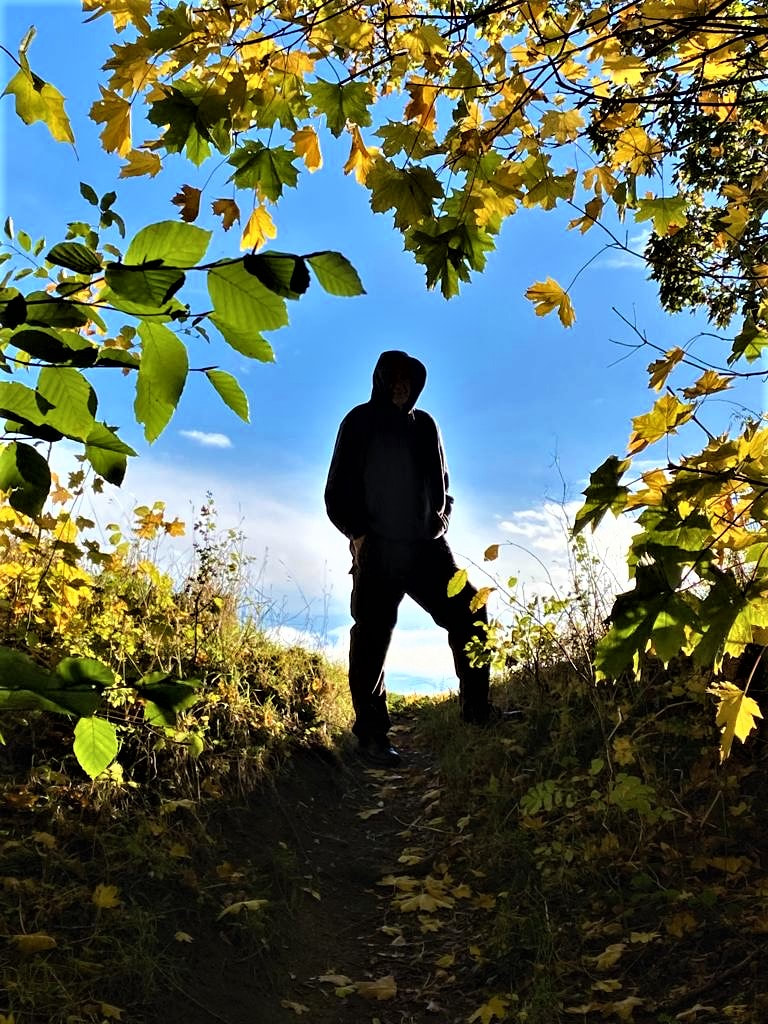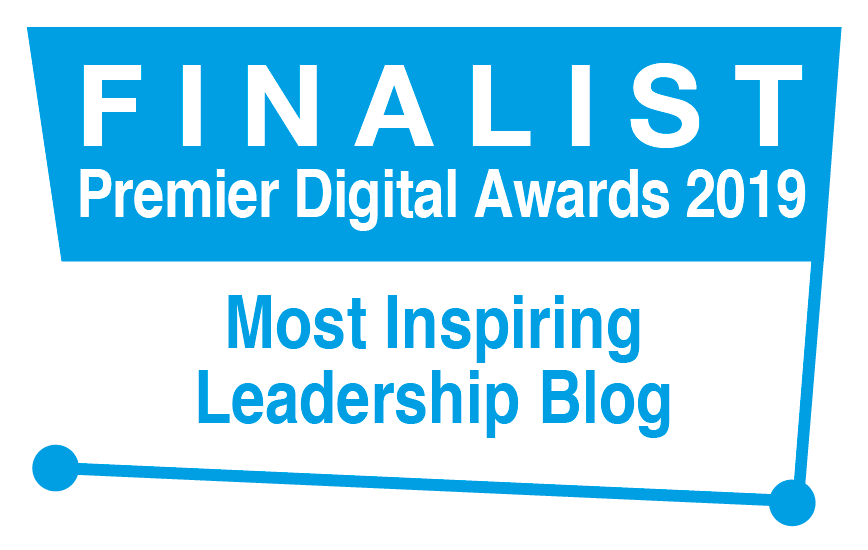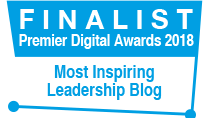|
‘Always vote for principle, though you may vote alone.’ (John Quincy Adams) I never had the privilege of meeting Soji Taguchi, but I do wish I had. Soji was a manager at a Japanese-owned textiles factory in the Philippines. Seeing how meagrely the Filipino workers were paid, he gave away a significant portion of his own salary each month to top up theirs. When a young Filipina was severely distressed one day and, in her upset, damaged an expensive piece of machinery, he paid for the repairs himself. Instead of chastising her he listened to her plight and, subsequently, regularly slipped money (secretly) into her pockets to help her, a poor teenager, to pay her bills. This woman’s life is now a clear reflection of his. The power of a positive role-model. Ted Winship was my mentor, a shopfloor supervisor at an industrial site in the UK. Once, the workers refused to enter an enclosure because the conditions in it were so terrible. The manager told Ted that, if he could persuade them to do the work, they would all be paid a substantial bonus. Ted took the manager at his word. He entered the compound first and the work was completed on time. At the end of the project, however, the manager refused to pay the bonus and only gave Ted his. It was a serious breach of trust. On hearing of this betrayal, Ted confronted the manager but to no avail. He distributed his own bonus to the workers, resigned from his job and walked out. Ethics in action. Self-sacrifice for the sake of others. The personal costs were high – but the spiritual benefits were immeasurable.
12 Comments
‘If you’re not confused, you’re not paying attention.’ (Tom Peters) Leaders who develop strategy collaboratively with diverse key stakeholders often find that inviting others in proves critical to its success. It recognises that no leader, no matter how knowledgeable or experienced, can know everything and it values the contribution that others can bring. That said, leaders can also feel overwhelmed if levels of participation are high and inputs are complex. These tips (below) are, therefore, designed to help leaders sift through and make sense of the reams of hopes, ideas, information, impressions, data etc. that they may surface and receive through strategy research and through inviting input from various people and groups. They are not intended as a prescriptive one-size-fits-all set of rules. Have a glance and see which, if any, work best for you. 1. Don’t panic In the midst of some great information and ideas, you are also likely to receive input that will look unclear, confusing or contradictory. There may be handwriting you can’t read, comments in shorthand that made sense to the person who wrote them but don’t make sense to you etc. You may receive so much input from diverse people and sources that it could feel bewildering. If so...don’t panic! 2. Research questions Go back to your research questions. Use them as a guide to sift through the input you have received. How far does the overall input contribute to answering the questions you set out to address? Has any of it raised wider or deeper questions that need to be acknowledged? Is any of the input interesting but distracting? Avoid the temptation to race down fascinating rabbit holes that take you off track. 3. Test a hypothesis Some leaders suggest formulating a hypothesis – a provisional answer to the questions you set out to answer – before sifting through responses. This provides a focus, a testing stone, and enables you to check each response: ‘Does this support or contradict the hypothesis?’ If it doesn’t relate to the hypothesis, shelve it for now so that you don’t get distracted. You can always circle back to it later. 4. Cluster responses Some leaders prefer to start with a blank sheet, skim through responses and note intuitively what core themes or ideas emerge. You can then place responses under those themes, adding or modifying themes as the sifting process progresses. Don’t worry about identifying the themes perfectly too early. You can always hone them and see what answers they point towards later. 5. Test your biases It can be tricky for leaders to look at responses afresh, especially if we have a strong interest in the work we do currently or strong views about how we should move forward. During the research phase, I refer to these challenges as ‘blind spots’ (assumptions) and ‘hot spots’ (sensitive areas). Invite others to test your assumptions and to point out if you appear to avoid challenges or new ideas. 6. Trust the process We may have invited and received input from a diverse range of people and groups. Whilst no strategy research will ever be 100% exhaustive and conclusive, the insights that we draw through a collaborative strategy venture will in most cases be good enough – that is, good and enough as a signpost to the future. Pray, be confident in what you know and excited by what you discover! ‘When trouble arises and things look bad, there is always one individual who perceives a solution and is willing to take command. Very often, that person is crazy.’ (Dave Barry) We can think of leadership as the property of a structure, in which a person designated as a 'leader' holds particular responsibilities and has, at least in principle, the hierarchical authority needed to fulfil them. We can also think of leadership as an intrinsic property of an individual. In this sense, leadership is something that resides within and emanates from a person, something that she or he has and does. This is the realm of competency frameworks and of leader-development initiatives. We can also think of leadership as the property of a group; for instance, a leadership team. In this idea, shared leadership is something exercised by a collective, where a diverse united group is, in potential, more than the sum of its parts. We can also think of leadership as a property of a dynamically-complex eco-system, in which acts of leadership emerge, sometimes unexpectedly and from unexpected places, and exert influence. This is the arena of dispersed and distributed leadership. In organisations, I’m finding the latter perspective especially useful. When working with leadership teams, I invite participants to reflect on the eco-system (cf Gestalt: field) as a whole; for instance: 'Where is leadership-as-influence exercised, inside or outside of the organisation’s boundaries? What are the distinctive roles and responsibilities of different 'leadership' entities within the system? What are the relationships between them? What does each need from the others to be effective?' I notice this invariably opens up far deeper, wider and richer conversations than those that focus on individual leaders alone, or leadership teams in isolation, as if they exist in a cultural-contextual vacuum. Some people find it useful to experiment with mapping their eco-system graphically, recognising that any depiction will reveal and, therefore, create opportunity to open up to healthy exploration and challenge, the way in which they construe their reality and leadership dynamics within it. ‘When the winds of change blow hard enough, the most trivial of things can turn into deadly projectiles.’ (Despair.com) You’ve probably heard of change management. You’ve probably heard of change management teams too. You’ve probably heard of change plans, like project plans, sometimes expressed in Gannt charts with rows of scheduled tasks, mapped against proposed timeframes. You’re less likely, I would guess, to have heard of a transition plan. A transition plan deals with the human dimensions of change, the underlying psychological, emotional and relational issues that often prove critical to its success. Whilst change can often be planned and prepared for by agreeing desired outcomes, then working backwards to identify the practical steps needed to achieve them (a bit like working out the mechanical structure of a car engine in order to build one), transitions don’t work like that. A change process may be complex, in that there may be many interlinked moving parts, yet is in principle manageable. A transition process is dynamically-complex and, therefore, inherently unpredictable. This means that transitions can only be handled effectively by ongoing conversations with affected people. It calls for open and honest dialogue. It calls us to be invitational, curious and co-creative. It involves listening, hearing, being responsive and building trust. ‘If we were to do X…what would it mean for you?’ ‘Given what it would mean for you, what would you need?’ Well-led transitions will influence mood, climate, energy, engagement and agency: critical success factors in any change. ‘Life is like the harp string. If it is strung too tight it won't play, if it is too loose it hangs. The tension that produces the beautiful sound lies in the middle.’ (Gautama Buddha) In World War 2, when faced with a critical decision on how to respond to the Nazi threat, one of Winston Churchill’s advisers argued forcefully that ‘organisation is the enemy of improvisation’. This wasn’t a diatribe against the power of organisation per se. It was, however, deeply rooted in a belief that the UK’s main chance of success would be to act in ways that would capitalise on its own agile cultural traits – and leave the highly-organised German war machine disorientated and defeated. I’ve noticed there are parallels in learning a second language too. Students are often taught in highly-organised ways – focusing on vocabulary, grammar, reading and writing. It can provide them with a useful foundation, yet can also leave them completely paralysed in free-flow conversation. I’ve concluded that, at least in this respect, ‘Accuracy is the enemy of fluency.’ Remove the expectation to get everything right, distract from fears of making a mistake, and the words will start to flow. That said, I need to beware of unhelpful polarisation. Early in my OD career, I worked alongside an experienced HR consultant, Chris Rowe, who introduced me to a tight-loose principle. I had argued instinctively that an organisation needed to let go of its highly-organised, stifling structures and processes to become more flexible, responsive and innovative. Chris challenged me: there is a time for tight and a time for loose – and wisdom in knowing which, where, when and for whom. ‘If you can walk away from a landing, it’s a good landing. If you can use the plane the next day, that’s an outstanding landing.’ (Chuck Yeager) ‘I think I just crashed the plane!’ That made me laugh. We had been toying with the metaphor of flying an aircraft to think about different stages of a coaching or action learning process. My nephew, a trainee pilot, had explained to me previously how landing a plane after a flight can be the tricky part. There’s a risk that, having touched down, the plane bounces off the runway and takes off again, resulting in something like a kangaroo-effect along the runway until it finally comes to a halt. During an action learning facilitation training workshop this week, a participant guided the group successfully ‘down’ into the action stage, only inadvertently to have it take off again as she opened up to further questions for exploration. In the learning review afterwards, one of her fellow participants commented with a smile that it felt, perhaps, more like a turbulent landing than a crash into the runway. That was a relief. Yet, how to land a plane without the bumpy-bounce effect? Tony Stoltzfus in Coaching Questions (2008) offers a useful guide that focuses on three successive stages to help create a shift, from possibilities to decisions to committed actions: Could do; Want to; Will do. Could-do raises possibilities and options into the frame. Want-to touches on energy and motivation. Will-do moves towards determination and traction. We could picture this sequence as something like: What could you do? Is that a step you want to take? What will you do, by when? Stoltzfus goes on to highlight potential issues to look out for and to attend to, including ‘insurance’ and ‘equivocation’. The former involves helping a person to identify and address critical factors that could either ensure or undermine their success. The latter can be useful if a person appears to be feeling ambivalent or only superficially committed to a course of action. It’s the person’s own choice as to whether they follow-through. This is, however, about helping them to land themselves well. Examples of insurance-type questions are: ‘Are there any obstacles to getting this done?’ ‘Who else do you need to check with?’ ‘On a scale of 1-10, how confident are you that you’ll complete this step by the deadline?’ ‘What would it take to raise that to a 7, 8 or 9?’ ‘How could you change the step or the deadline to make this more realistic?’ ‘What could you do to increase your chances of getting this done successfully?’ ‘Do you need an accountability person or mechanism to help you do this?’ Examples of equivocation-type questions are: ‘Are you ready to commit to that next step?’ ‘You said you might take that next step. Is there anything holding you back?’ You said you ought to do this. What would make it something you’ll do because you really want to do it?’ ‘You sound like you're procrastinating. You can choose to do this or not to do it. What will you do?’ ‘Is there anything we need to discuss or change about the step you’re considering that would help you to make a more decisive choice?’ Stoltzfus ends by offering some tips on tentative language to listen out for at the action phase that could indicate a person is equivocating, or hasn’t yet reached a decision point: ‘I could…’ ‘I might…’ ‘I’m thinking of…’ ‘One possibility…’ ‘Maybe I should…’ ‘I ought to…’ ‘I’d like to…’ ‘Someday…’ It’s analogous to hovering above the runway without yet having achieved touch-down. Try: ‘How do you feel, here and now, as you consider each option?’ ‘If you were to land this, what would you need?’ [See also: A good ending; Get a grip; Grit] ‘Just ask the question.’ (Sonja Antell) A key skill in coaching and action learning is simply to pose a question. Adding pre-amble before a question, or post-amble (as one action learning participant aptly named it this week) afterwards, is one way of establishing rapport and sometimes credibility by adding background and context to a question. We may hope, too, to communicate empathy and soften the hardness that a short, succinct question alone could convey. Here’s an example of pre-amble: ‘I can identify well with the situation you are describing today. I’ve been in similar situations too and it reminds me of some of the challenges that I faced then. Given that experience, if I were to ask you a question now, I think I might ask…’ And of post-amble: ‘The reason for my asking this question is that sometimes people in the kind of situation you have described find it useful to consider…’ That’s OK, right? Yet imagine this. The person who is being coached, or the person presenting during action learning, is often engaged in an intense thinking journey, grappling internally with a challenge or struggle and seeking to make sense of it in order to move forward. A simple question can feel like a useful, light-touch nudge, a prompt, a possibility. Pre- or post-amble can distract the person, feel like interference and disrupt the flow. So how to handle the relational and cultural risks of being too direct? How to avoid coming across as abrupt or rude? This is best addressed at the contracting and ground rules-setting stage. Helpful key questions to reach clarity and agreement from the outset include, ‘What are we here to do?’ and ‘How shall we do this?’ Then, as we step back periodically to review our work together, ‘What are we doing well?’ and ‘Even better if..?’ [See also: Claire Pedrick: Simplifying Coaching (2020)] ‘How is that human systems seem so naturally to gravitate away from their humanness, so that we find ourselves constantly needing to pull them back again?’ (Jenny Cave-Jones) What a profound insight and question. How is that, in organisations, the human so often becomes alien? Images from the Terminator come to mind – an apocalyptic vision of machines that turn violently against the humans that created them. I was invited to meet with the leadership team of a non-governmental organisation (NGO) in East Africa that, in its earnest desire to ensure a positive impact in the lives of the poor, had built a bureaucratic infrastructure that, paradoxically, drained its life and resources away from the poor. The challenge and solution were to rediscover the human. I worked with a global NGO that determined to strengthen its accountability to its funders. It introduced sophisticated log frames and complex reporting mechanisms for its partners in the field, intended to ensure value for its supporters and tangible, measurable evidence of positive impact for people and communities. As an unintended consequence, field staff spent inordinate amounts of time away from their intended beneficiaries, completing forms to satisfy what felt, for them, like the insatiable demands of a machine. The challenge and solution were to rediscover the human. A high school in the UK invited me to help its leaders manage its new performance process which had run into difficulties. Its primary focus had been on policies, systems and forms – intended positively to ensure fairness and consistency – yet had left staff feeling alienated, frustrated and demoralised. We shifted the focus towards deeper spiritual-existential questions of hopes, values and agency then worked with groups to prioritise high quality and meaningful relationships and conversations over forms, meetings and procedures. The challenge and solution were to rediscover the human. Academics and managers at a university for the poor in South-East Asia had competing roles and priorities, and this had created significant tensions as well as affected adversely the learning experience of its students. The parties had attempted unsuccessfully to resolve these issues by political-structural means; jostling behind the scenes for positions of hierarchical influence and power. They invited me in and we conducted an appreciative inquiry together, focusing on shared hopes, deep values, fresh vision and a co-created future. The challenge and solution were to rediscover the human. Where have you seen or experienced a drift away from the human? Curious to discover how I can help? Get in touch! ‘I’m not a teacher, but an awakener.’ (Robert Frost) I imagine something like a coffee table between us. As the client talks about a challenge, issue or opportunity they are dealing with, I imagine them metaphorically painting a picture on the table, perhaps adding something like colourful photos from magazines, to depict their situation vividly. If, as a coach, I allow myself to follow the client’s gaze, to focus my own attention too on the scenario that is unfolding, I risk losing sight of the client. It may weaken the contact between us; draw us both into the place where the client already feels stuck; diminish the potential for transformation. How can I know if this is happening, if I have inadvertently become preoccupied with or seduced by the drama the client is presenting? Here are some tell-tale signs: ‘Tell me more about…’; ‘I’d be interested to hear more about…’; ‘Could you share a bit more of the background..?’ It could be that the client’s issue resonates with an area of interest, expertise or experience of the coach; or that the coach has subconsciously slipped into diagnostic-consultant mode, with a view to finding or creating a solution for the client. It’s as if, ‘If you give me enough information, I can resolve this for you.’ A radically different approach is to hold our attention on the client, to be aware of the figurative coffee table in our peripheral vision, but to stay firmly focused on the person (or team) in front of us. This is often where the most powerful coaching insights and outcomes emerge. Here are some sample person- (or team-) orientated questions: ‘Who or what matters most to you in this?’; ‘What outcome are you hoping for?’; ‘As you talk about this now, how are you feeling?’; ‘What assumptions are you making?’; ‘What are you not-noticing?’; ‘What are you avoiding?’; ‘Now that you know this, what will you do?’ ‘Are we learning yet?’ (John Connor to the Terminator) ‘History never repeats itself. Every single historical moment is distinct from those past.’ (Angela Johnson). That said, we can and do well to learn from the past to help inform our decisions for the future. This is a core principle of Learning Reviews. Some years ago, Learning Reviews were a key part of knowledge management (KM). The idea of KM was to capture, distil and disseminate learning from projects, to save others in future from having to start from scratch or re-invent the wheel. Things became quite complex if, say, project participants had a vested interest (e.g. for competitive advantage) in retaining, rather than sharing, what they had learned from experience; or hidden factors that had influenced success in one instance or arena were subtly different to those in a new situation. Against this backdrop, KM evolved into wisdom management (WM), where those engaged in the process would critically-evaluate insights and ideas rather than simply re-apply them. I ran lots of Learning Reviews with international non-governmental organisations (INGOs), where I developed and practised an appreciative approach that I will share here. Imagine a grid with ‘What Went Well’ (WWW) and ‘Even Better If’ (EBI) as column headings; and ‘Why’, ‘What’, ‘How’ and ‘Who’ as separate rows. ‘Why’ focuses on purpose; ‘What’ on content; ‘How’ on methods; and ‘Who’ on people and relationships. I would give each key stakeholder a copy of the template in advance. At the start of a Learning Review meeting, I would invite participants to decide on key questions (e.g. ‘What are the questions that, if we were to answer them, would enable us to draw out key insights?’). Then, I would facilitate the group to engage in a process of critical reflexivity, addressing blind spots (e.g. ‘What assumptions are we making that could prevent us gaining deeper insights?') and hot spots (e.g. ‘What issues may we be tempted to avoid in case they feel too difficult or painful?’). This groundwork with a group at the outset often proved vital. It enabled participants to contract with me and with each other around issues such as trust, vulnerability, humility and courage, as foundations for the Review itself. We would then explore the Why, What, How and Who dimensions using the WWW and EBI philosophy and approach, working rigorously to identify the conditions (e.g. personal or broader contextual) that had contributed to what had been experienced. I would end the Review by inviting participants to identify and crystallise, out of all that had been considered and discussed, the top 3-5 critical success factors for initiatives of this type. The final challenge would be to articulate and publish the resulting discoveries as tangible, transferable recommendations that would be easily understandable and accessible to other leaders and participants in future projects, along with details of who to contact if further insight is needed. What have been your experiences of Learning Reviews? What have you learned through doing them? |
Nick WrightI'm a psychological coach, trainer and OD consultant. Curious to discover how can I help you? Get in touch! Like what you read? Simply enter your email address below to receive regular blog updates!
|













 RSS Feed
RSS Feed